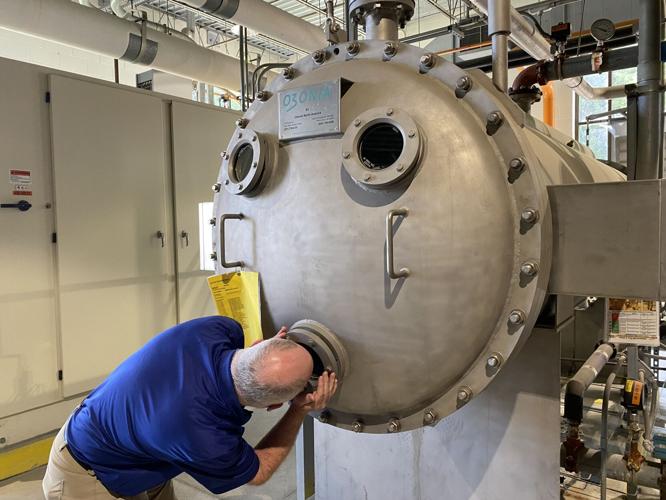MILWAUKEE â Waukesha Mayor Shawn Reilly, along with members of the Common Council and Waukesha Water Utility Commission, visited the Linnwood Water Treatment Plant at 3000 N. Lincoln Memorial Drive in Milwaukee on Tuesday afternoon. The officials learned how Lake Michigan water will be processed before being piped out to Waukesha once the transition to Great Lakes water takes place.
Milwaukee Water Works Water Plants Manager Dan Welk and Water Quality Operations Manager Jason Otto led the tour, explaining the functions of various buildings and equipment on the premises.
Construction began on Linnwood in 1933. The plant was completed in 1938 and began treating water the following year. After World War II, Milwaukeeâs population surged, resulting in the construction of a second treatment facility to aid in distributing water to area residents. The Howard Avenue Water Treatment Plant was built in 1962. Roughly 34.5 billion gallons of water are processed through the plants each year. The majority of Waukeshaâs water will come through the Howard facility, but the process for treating water is the same at Linnwood.
In order to make water from Lake Michigan drinkable, water is taken in 1.25 miles from the shore at a depth of 60 feet in a pipe that is 12 feet in diameter. According to the Milwaukee Water Works website, the lake water then âpasses through a multiple barrier treatment process. âĶ to protect public health. The barriers destroy and remove illness-causing micro-organisms in the lake water.â
Ozone gas is the primary form of disinfection. Liquid oxygen is sparked by the ozone generators to create the gas. The ozone is bubbled into the water in large contactor tanks during the first stage of water treatment. This attacks the illness-causing microorganisms such as cryptosporidium and giardia.
Next, particles in the water are removed through coagulation, flocculation, settling, and biologically active filtration. When Linnwood first opened, the filters used to treat the water consisted of sand and gravel â similar to what occurs in nature. That process was used for nearly six decades before being upgraded to newer, more effective technology.
âThis was replaced in the 90s as a result of improvements made after cryptosporidium,â Welk noted. Now, Linnwood uses dual media filters.
At this stage in the treatment process, chlorine is added as a secondary disinfectant. To reduce dental cavities, fluoride is also added.
As a means of preventing pipe corrosion and subsequently keeping lead that may be present in piped from leaching into the water, a phosphorus chemical is added.
Lastly, as mandated by the Wisconsin Department of Natural Resources, residual amount of chloramine for disinfection is maintained in the distribution system to help protect the water from bacterial contamination. All of the chemicals added in the treatment process are certified food grade and safe for human consumption.
From start to finish, it takes about 22 hours for water to move from Lake Michigan through the treatment process at Linnwood.
Welk also noted that the water temperature can vary drastically as it is being brought in to Linnwood. âThe temperature swings coming in from the lake and we have no control over that. As the lake warms up over the summer, the tap water gets warm,â he said.
The coldest water that comes into Linnwood was 32.5 degrees Fahrenheit. The warmest water to ever pass through the system was about 80 degrees. âWherever the winds are blowing, that pushes where the warm water goes,â Welk explained. âIf we get easterly winds, that pushes the warm water to our side of the lake. If we get westerly winds, it goes over to the other side, to Michigan.â
In order to accommodate different water temperatures, Linnwood will adjust ozone levels and the operation of filters.
Water gains 5-10 degrees in temperature as it goes through the treatment process, so the tap water will be slightly warmer when it gets to Waukesha.
Because of its extensive water treatment process, Milwaukee Water Works was recognized by the American Water Works Association. âWe are one of, if not the only utility in the state of Wisconsin that has achieved the Partnership for Safe Water Distribution Optimization Directors Award,â Welk reported.
As part of the award, Milwaukee Water Works continues to report back to the national association and continue to optimize the Linnwood and Howard plants to improve treatment performance.
Waukesha residents can expect to receive Lake Michigan water by late August or early September. For more information about the Linnwood Water Treatment Plant, visit .












